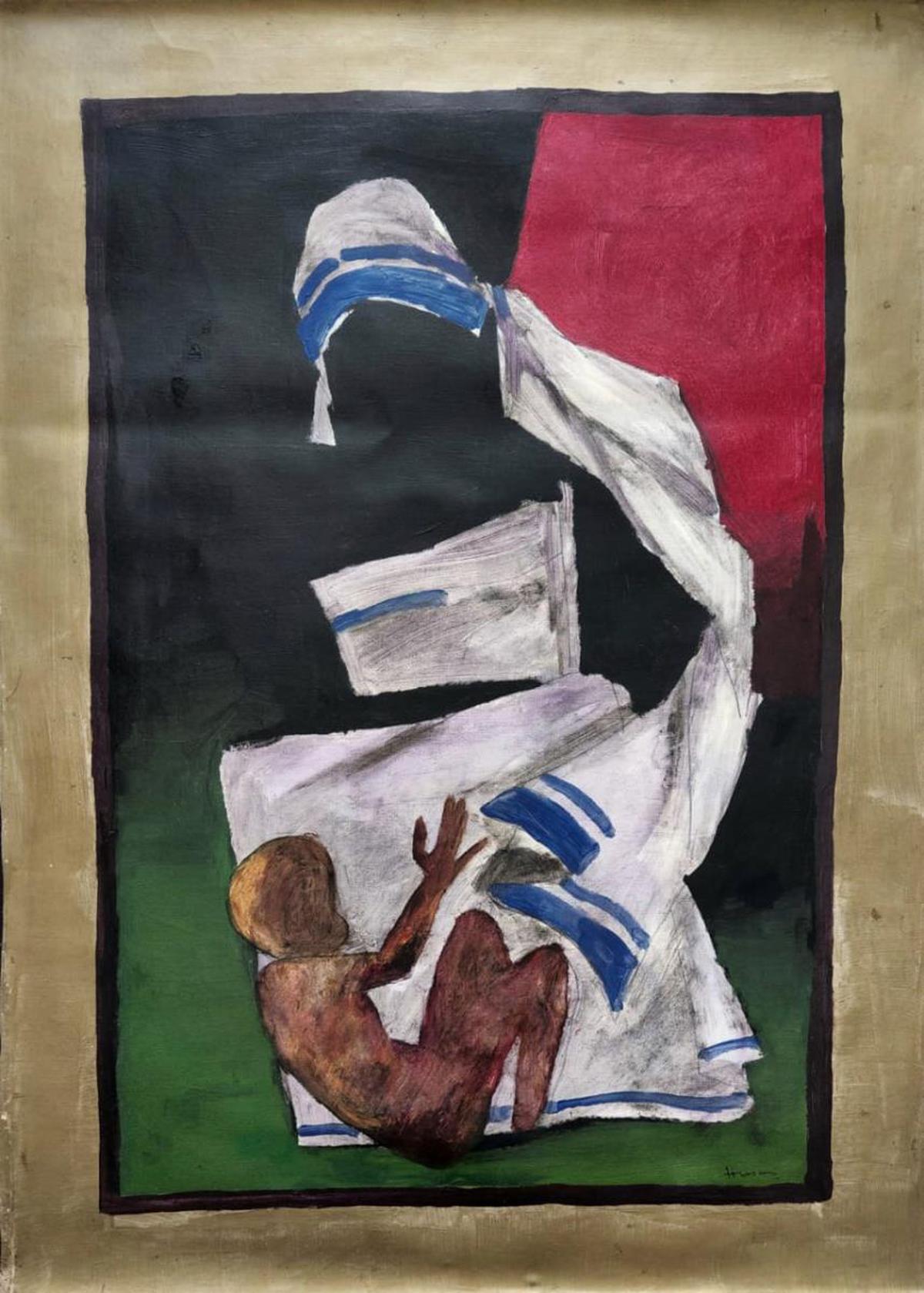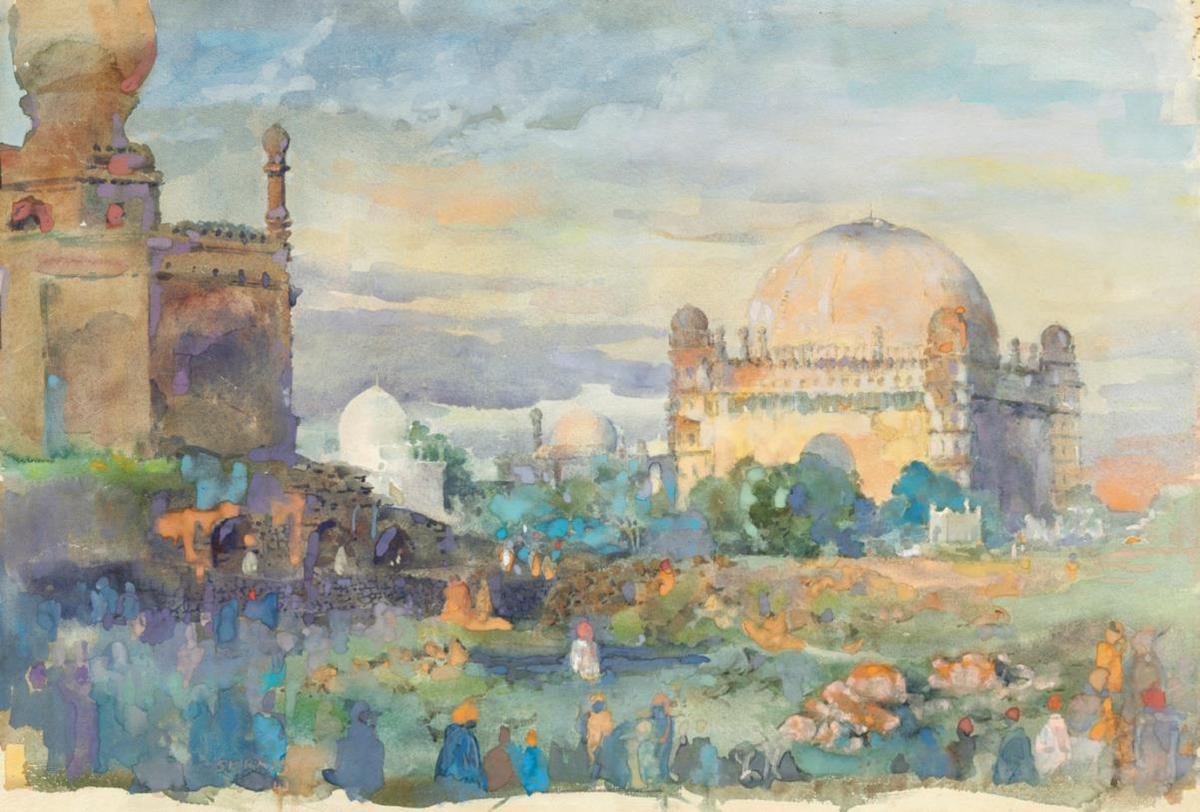Commemorating 75 years of Bombay’s Progressive Artists’ Group: A preview

M.F. Hussain’s Last Supper
| Photo Credit: Special Arrangement
In the annals of Indian art history, one group stands out for the indelible mark it left on the creative landscape. The Progressive Artists’ Group, formed in 1947, revolutionized the art scene in Modern India. As the group completes 75 years, an exhibition showcasing the works of its six original members — Maqbool Fida Husain, Sayed Haider Raza, Francis Newton Souza, Krishnaji Howlaji Ara, Sadanand K. Bakre, and Hari Ambadas Gade, is on at the Triveni Kala Sangam.
In a collaborative effort of the Progressive Art Gallery and Raza Foundation, the exhibition aims to make people aware of the remarkable artworks of the legendary artists and remind the art world of the elements that went into the creation of the historic group. Spanning decades the collection offers a glimpse of the artistic evolution across time. The artworks were apparently not appreciated initially but as art awareness grew, they were sought after.
“The Progressive Art Gallery has the artworks from the 1940s till 2010”, says Geeti Sen, who conceptualised the exhibition.

Husain’s Mother Teresa
| Photo Credit:
Special Arrangement
The eye-catching displays at the exhibition include Husain’s Mother Teresa from the 1980s, which was a result of his fascination for the Nobel Prize winning founder of the Missionaries of Charity, and The Last Supper (2005).
Raza was the only landscapist in the group. His Gol Gummad ( 1943) is influenced by European art, introducing Islamic domes and turrets in tranquil blues and cream. His later works transformed into abstraction. Bakre’s Still Life in 1964 vibrates with different shapes of bottles in blue, white and red, including the chequered pattern in black and white of the floor below the table.
What set apart the galaxy of extraordinary talents in the Progressive Artists’ Group was not only their artistic prowess but also the remarkable diversity within the group. Two Muslims, one Christian, and three Hindus, transcended the barriers of caste, creed, and religion at a time when the country was in a state of communal disharmony. . The Progressives held their first exhibition in Baroda and subsequently in Bombay in 1949.

Raza’s Gol Gummaz
| Photo Credit:
Special Arrangement
The artists embraced diverse influences, creating a tapestry of artistic styles and techniques. Each member was rooted in the Indian ethos while incorporating elements of European modernism, post-impressionism, cubism, and expressionism. K.H. Ara’s vibrant watercolors and gouache paintings paid homage to folk and tribal art, while F.N. Souza distorted forms, seamlessly merging Goan folk art with cubist elements. H.A. Gade, recognized as one of the pioneers of abstract painting in post-independent India, explored landscapes in his artworks.
The group was disbanded in 1956 but the artists remained lifelong friends, exchanging critical insights and supporting each other’s artistic journeys. Krishen Khanna, the sole surviving member, continues to create art at the age of 90plus.
At Triveni Kala Sangam, Till 1 July 10; 11am to 8pm
For all the latest Entertainment News Click Here
For the latest news and updates, follow us on Google News.
